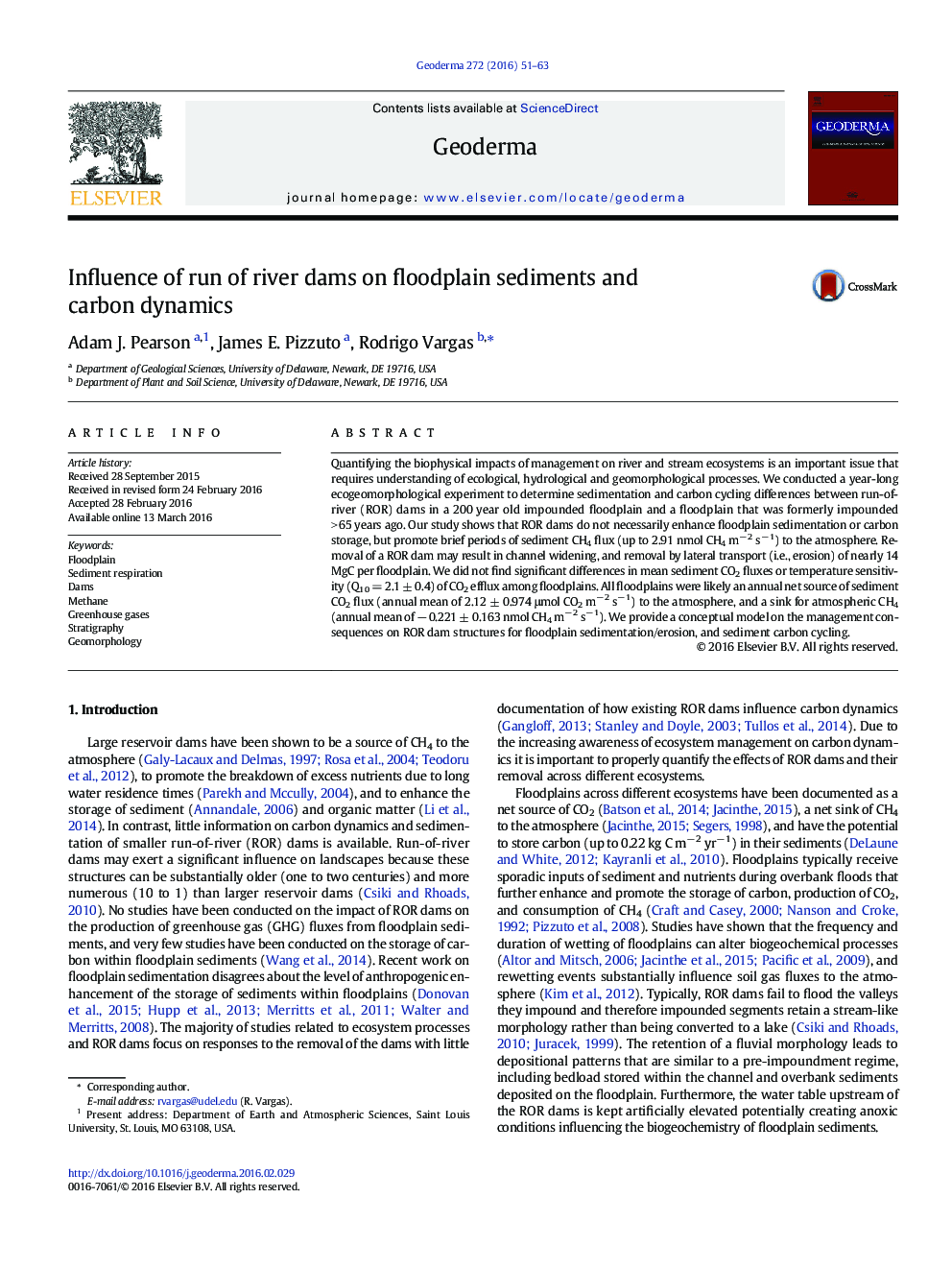| Article ID | Journal | Published Year | Pages | File Type |
|---|---|---|---|---|
| 4572944 | Geoderma | 2016 | 13 Pages |
•Ecogeomorphological variables were measured in run-of-river (ROR) dams.•Removal of a ROR dam results in a loss of 14 Mg C per floodplain.•Floodplains were an annual source of CO2 and a sink of CH4.
Quantifying the biophysical impacts of management on river and stream ecosystems is an important issue that requires understanding of ecological, hydrological and geomorphological processes. We conducted a year-long ecogeomorphological experiment to determine sedimentation and carbon cycling differences between run-of-river (ROR) dams in a 200 year old impounded floodplain and a floodplain that was formerly impounded > 65 years ago. Our study shows that ROR dams do not necessarily enhance floodplain sedimentation or carbon storage, but promote brief periods of sediment CH4 flux (up to 2.91 nmol CH4 m− 2 s− 1) to the atmosphere. Removal of a ROR dam may result in channel widening, and removal by lateral transport (i.e., erosion) of nearly 14 MgC per floodplain. We did not find significant differences in mean sediment CO2 fluxes or temperature sensitivity (Q10 = 2.1 ± 0.4) of CO2 efflux among floodplains. All floodplains were likely an annual net source of sediment CO2 flux (annual mean of 2.12 ± 0.974 μmol CO2 m− 2 s− 1) to the atmosphere, and a sink for atmospheric CH4 (annual mean of − 0.221 ± 0.163 nmol CH4 m− 2 s− 1). We provide a conceptual model on the management consequences on ROR dam structures for floodplain sedimentation/erosion, and sediment carbon cycling.
